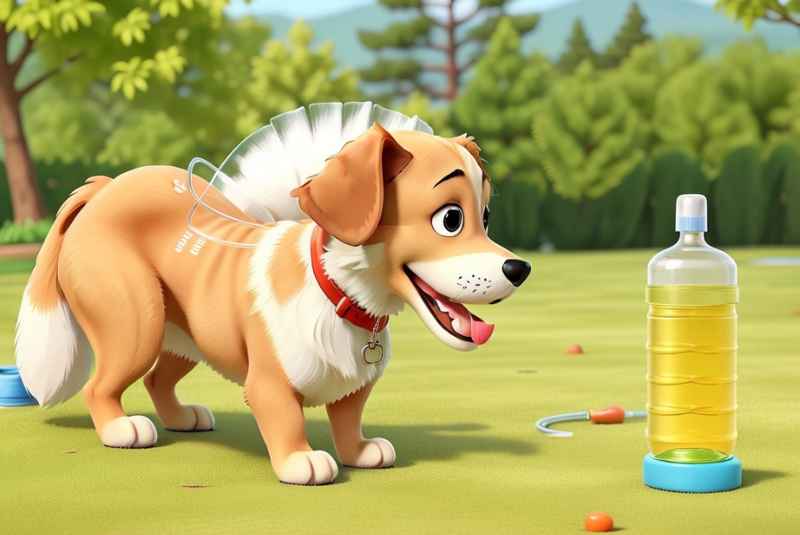There may be occasions when you, as a responsible dog owner “How to Successfully Collect Your Dog’s Urine Sample?” need to take a urine sample from your canine companion. Getting your dog to urinate in a cup can be difficult, regardless of whether it’s for a regular wellness check, a diagnostic procedure, or medication monitoring. But don’t worry! You can complete this assignment effectively if you take the appropriate approach, have patience, and use a few cunning techniques. This tutorial will cover all the information you need to efficiently and stress-freely collect a urine sample from your dog.
How Do You Successfully Collect Your Dog’s Urine Sample?
Although taking a urine sample from your dog may seem like a difficult undertaking, it is crucial for preserving their general health and wellbeing. This article will provide you with doable steps to make the process easier for both you and your canine partner, whether you’re a seasoned dog owner or a novice.
Read This Also: Did you know that dog urine is a natural deicer?
Understanding the Importance of How to Successfully Collect Your Dog’s Urine Sample?
Let’s talk about the importance of collecting a urine sample before getting into the specifics of the collection procedure. Your dog’s urine can reveal important details about their hydration status, renal health, and any medical problems. The early detection of diabetes, urinary tract infections, and other underlying diseases can be aided by routine urine testing.
Preparing Yourself and Your Dog

It’s crucial to psychologically prepare both you and your dog for a urine collection to set the atmosphere for success. Be patient and calm as you approach the assignment. How to Successfully Collect Your Dog’s Urine Sample?
Selecting the Right Container
To obtain a clean, untainted sample, the right container must be selected. For this, a shallow, spotless plastic or paper cup works great. Avoid using containers that have soap residue or strong odors since your dog may not urinate in them.
Timing is Key: When and How Often to Collect a Sample
When urine is collected, it matters. Ideally, take the sample while your dog is going potty as usual. It is advisable to collect a sample in the morning following their overnight fast to get precise findings. If your vet requests numerous samples, heed their time recommendations.
Creating the Right Environment
Dogs do best in a setting that is familiar and welcoming. A distraction-free area where your dog may relieve itself should be chosen. Avoid congested regions and noisy locations.
Positive Reinforcement Techniques
Use positive reinforcement to nudge your dog towards using the cup for urination. When they show interest in the cup or start to urinate, reward them with goodies, compliments, and love. This will help people associate the procedure favorably.
Patience and Persistence: Dealing with Challenges
Read This Also: Are There Many Possible Causes of Dark, Syrupy Pee in Dogs?
Some dogs may be reluctant to urinate when asked to or in a strange place. Be persistent and patient. Try again later if your dog doesn’t urinate right away. Avoid berating or expressing impatience, since these behaviors might increase stress related to the activity.
Tips for Female and Male Dogs
Female and male dogs may require slightly different methods for collecting urine. When a woman squats, you can hold the cup underneath her. As the guy lifts his leg, softly place the cup below them.
Safely Handling and Transporting the Sample

Once the urine sample has been properly obtained, make sure to carefully shut the container to avoid leaks or contamination. Take the sample as quickly as you can, ideally within a few hours, to your veterinarian.
The Role of Your Veterinarian
To analyze the urine sample and understand the findings, your veterinarian is essential. How to Successfully Collect Your Dog’s Urine Sample? will be clarified by them. depending on the sample that was taken, and suggest any necessary next actions.
Common Mistakes to Avoid
To guarantee a How to Successfully Collect Your Dog’s Urine Sample? collection procedure, avoid these typical mistakes:
- Using a dirty container
- Waiting too long before transporting the sample
- Allowing your dog to drink excessive water before collection
Additional Tips for Smooth Collection
The aim is to ensure a successful urine collection, and the following extra advice can help things go even more smoothly:
- Hydration Matters: Even if you don’t want your dog to drink much before pickup, make sure they are well-hydrated. Dehydration might make collecting urine more challenging and lead to a smaller sample.
- Routine Matters: On the day of collection, make an effort to keep your dog’s routine as consistent as you can. Regular routines might make it simpler for your dog to urinate on demand by lowering tension and anxiety.
- Use Distraction Techniques: Consider employing distraction strategies if your dog is very tense or reluctant. Before attempting to collect the sample, include them in play or take a little stroll. A dog that is more at ease is more inclined to comply.
Read More Discussion On Quora: How do I get a urine sample from a female dog?
The Importance of Regular Check-ups
Urine sample collection is a continuous process. Urine testing and routine examinations are essential for tracking your dog’s health over time. By detecting any changes in your dog’s health state, these tests can enable early intervention and treatment, if necessary.
A Note on Health Conditions

The collection of urine samples can provide important health information about your dog, but it’s important to keep in mind that not every test will reveal everything. If you have any concerns about your pet’s health, never hesitate to visit your veterinarian for a thorough evaluation.
Conclusion
In the above, we discuss How to Successfully Collect Your Dog’s Urine Sample? Even though getting a urine sample from your dog may seem difficult, you can successfully do this crucial pet care activity with the appropriate strategy and a little patience. Regular urine sample collection promotes your dog’s general health and aids in the early detection of any problems.
Can I use any container to collect the urine sample?
It’s best to use a clean plastic or paper cup to ensure accurate and uncontaminated results.
My dog seemed anxious during the collection process. What should I do?
Stay calm and use positive reinforcement techniques. If your dog is still anxious, take a break and try again later.
How much urine is needed for the sample?
Your veterinarian will provide specific instructions on the required amount of urine. Typically, a small amount is sufficient.
Can I store the urine sample in the refrigerator before taking it to the vet?
It’s best to transport the sample to the vet as soon as possible. Refrigeration may alter the composition of the urine.
What if my dog refuses to urinate in the cup?
Be patient and persistent. Offer treats and praise to encourage them. If necessary, consult your veterinarian for additional guidance.
